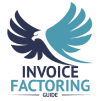
Performing a year-end financial review is crucial for small businesses. It helps you better understand what went well in the prior year and what could have gone better. It can also help ensure your business is fiscally strong in the new year. But, it can be tough to know what’s important if you’ve never performed a year-end financial review or are a little rusty. This page will walk you through the basic steps and which reports to pull. It’s helpful to start working through the steps in Q4, so you have ample time to follow up with any issues or bring in a professional, such as a CPA or tax specialist, if you need to clear anything up before the year concludes.
Gather and Review Financial Reports
You’ll use a variety of reports as part of your year-end financial review. They’re all standard reports, and you should be able to print them directly from your accounting software. However, if you don’t have software or get stuck, a bookkeeper or CPA can help.
Cash Flow Statement
Your cash flow statement (CFS) summarizes the cash and cash equivalents entering and leaving your business. It shows where your money comes from, where it’s going, and how much you have on hand. Your CFS can help you determine if your business has enough cash to cover expenses and can also be used to predict future cash flow, which is helpful for budgeting.
Profit and Loss Statement

Also known as the income statement, the profit and loss statement shows whether the business made money or lost money after all expenses are taken into account.
This is an important distinction because a business can have positive cash flow but not be profitable or be profitable but not have adequate cash flow. For instance, if your business faces a lull but takes out a loan, it may still have adequate cash flow to cover expenses but won’t be profitable. Equally, your business could be profitable overall but face a cash flow shortfall because clients are paying slowly.
Balance Sheet Report
The balance sheet can be thought of as a snapshot of what your business owes and owns. It’s a full report of the business’s assets, liabilities, and shareholder equity. You can use it to help determine if you have a surplus of cash that can be put toward liabilities or if your business should focus on saving more in the coming year.
Budget vs. Actual Report
As the name suggests, the budget vs. actual report shows what you budgeted compared to what you really spent during the year. As part of your year-end financial review, this report is used to help you identify variances so you can adjust your upcoming budget accordingly.
Net Profit Margin Report
Your net profit margin is used to gauge business fiscal health and can be used to determine if your money is being spent efficiently. Many businesses compare theirs to industry benchmarks to measure performance as well.
Accounts Payable Aging Report
The accounts payable aging report shows all your bills, when they need to be paid, and other essential details. It’s used to ensure you’re staying on top of all vendor payments, which is important for maintaining relationships and keeping costs low.
Accounts Receivable Aging Report
The accounts receivable aging report shows every entity that owes you money, balances, due dates, and other details. You can use it to ensure you’re following up with all invoices. If your business struggles with cash flow issues, your accounts receivable report can also help you pinpoint the cause.
Ensure Accounts Are Reconciled
Although accounts receivable and payable should be updated throughout the year, you’ll want to take another pass through your payables and receivables reports as part of your year-end financial review. Ensure both are current and that everything is accounted for and accurate.
Minimize Tax Liabilities
Connecting with a tax professional as part of your year-end financial planning is helpful. There may be things you can do before the year concludes to reduce your tax liabilities, such as adjusting your legal structure, spending money on specific items, or making certain investments.
Compare Your Results to Your Goals
Four out of five businesses fail to track their goals, according to Phoenix Business Journal. Their research shows just six percent even revisit them regularly. Your year-end financial review is the perfect time to take a deep dive using the reports you’ve pulled.
Establish Goals and Budgets for the Upcoming Year
Just half of all businesses tie their financial goal setting to overall company goals, per Phoenix Business Journal. As you draft your year-end business goals, be sure to establish financial goals that support them. Take these and your current spending habits into account as you draft budgets for the upcoming year as well.
Accelerate Your Cash Flow with Invoice Factoring
If your year-end financial review shows you’ll have a cash flow shortfall, invoice factoring can help. It may also be ideal if you need a working capital injection to bring in professional assistance or make purchases before the year concludes. With factoring, you sell your unpaid B2B invoices at a discount to a third party known as a factoring company. The factoring company immediately pays you up to 95 percent of the invoice’s value. You receive the remaining sum minus a small factoring fee when your client pays.
Get a Free Factoring Rate Quote
Invoice Factoring Guide takes the guesswork out of finding your ideal factoring company. We’re happy to match you with a provider specializing in your industry and offering competitive rates. To learn more or get started, request a free factoring rate quote.

About Invoice Factoring Guide
Related Articles
Get an instant funding estimate
Results are estimates based on the calculated rate and the total invoice amount provided.
Actual rates may vary.
Request a Factoring Rate Quote
PREFER TO TALK? Call us at 1-844-887-0300










